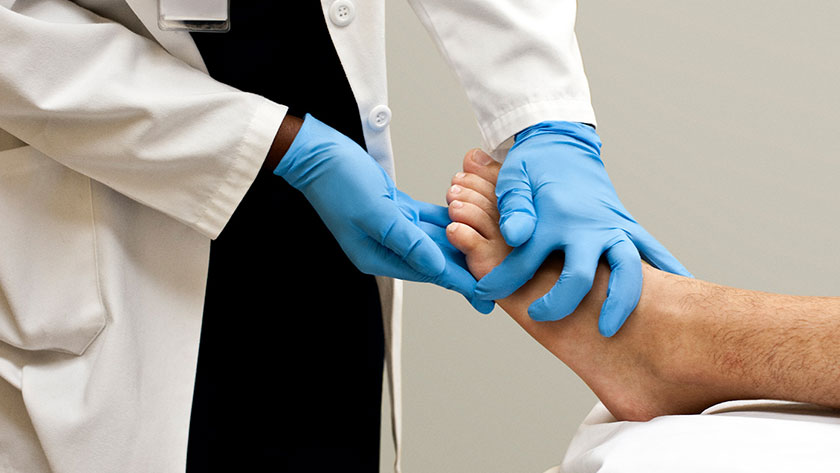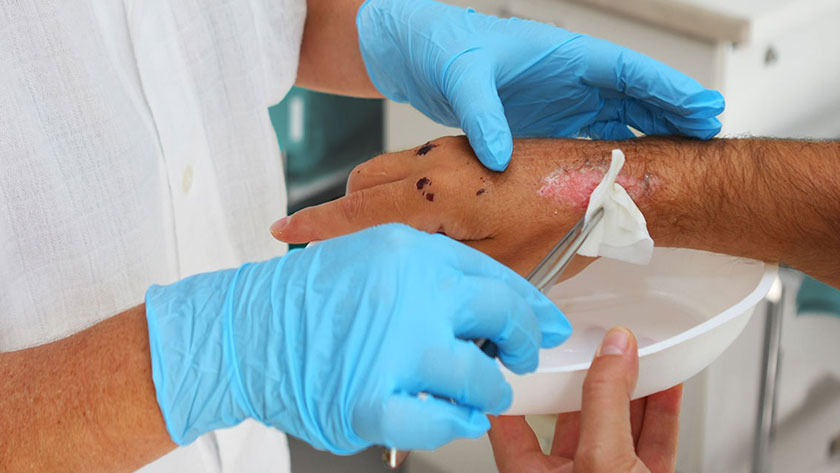How to treat a diabetic foot ulcer and help it heal faster
Get 6 tips to manage chronic wounds caused by diabetes.

There are more than 37 million people with diabetes in the U.S.¹ This lifelong disease comes with many health-related complications. One of the most common is the development of a diabetic foot ulcer. These slow-to-heal chronic wounds become even more challenging to manage when associated with other risk factors such as the following:
• Older age
• Longer-term diabetes
• Smoking
• Hypertension
• Hypercholesterolemia
• Abnormal blood sugar levels
How can you distinguish a diabetic foot ulcer from other lower extremity wounds? Diabetic ulcers typically occur below the ankle at any site of pressure, friction, shear or trauma. The wound is likely to be round, with margins often characterized by a periwound callus. The presence of diabetes increases the risk for infection.
Treating diabetic foot ulcers can be challenging, but there are some ways to help simplify the process and help improve outcomes. Here are 6 tips to start:
1
Reduce pressure
Help remove or minimize pressure on the foot by using effective offloading devices, total contact casting or specialty footwear.
2
Debride the area
When appropriate, perform radical local debridement of the callus, tissue, and bone.
3
Keep the foot clean and dry
It’s important to regularly cleanse the foot with a gentle cleanser and dry it thoroughly. Soaking, whirlpool or other hydrotherapies are not recommended, as they can lead to maceration, mild burns or infection.
4
Moisturize the area
To maintain and regain skin health, moisturize the leg to the wound margin. If the arterial perfusion is adequate to support moist wound healing, then treat the wound with a dressing that promotes optimal moisture. If the wound is dry, apply a product that donates moisture or supports what moisture is already present. If the wound is moderately to heavily draining, choose a dressing that absorbs excess drainage to help bring the moisture level back into balance.
5
Improve circulation
People with diabetes often experience reduced blood flow to the skin. There are some ways to help improve circulation such as vascular bypass, percutaneous angioplasty, laser treatment, and medications that increase blood flow. A vascular assessment might be done to assess blood flow and determine if surgical interventions are needed to help with healing.
6
Consider a holistic approach
It’s important to take a comprehensive view of wound healing. Some other interventions that can impact diabetic foot ulcers include normalizing blood glucose levels, treating edema, ensuring proper nutrition and controlling comorbid conditions.
Key takeaway
Millions of people are diagnosed with diabetes and experience related health conditions, including diabetic foot ulcers. Treating and managing diabetic foot ulcers can be challenging, but these 6 tips provide a place to start. With the right tools and resources, caregivers can feel more confident about helping these wounds heal.
References:
-
Centers for Disease Control and Prevention. National Diabetes Statistics Report website. https://www.cdc.gov/diabetes/data/statistics-report/index.html.




